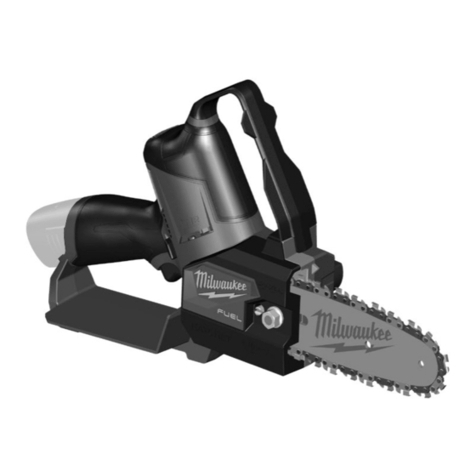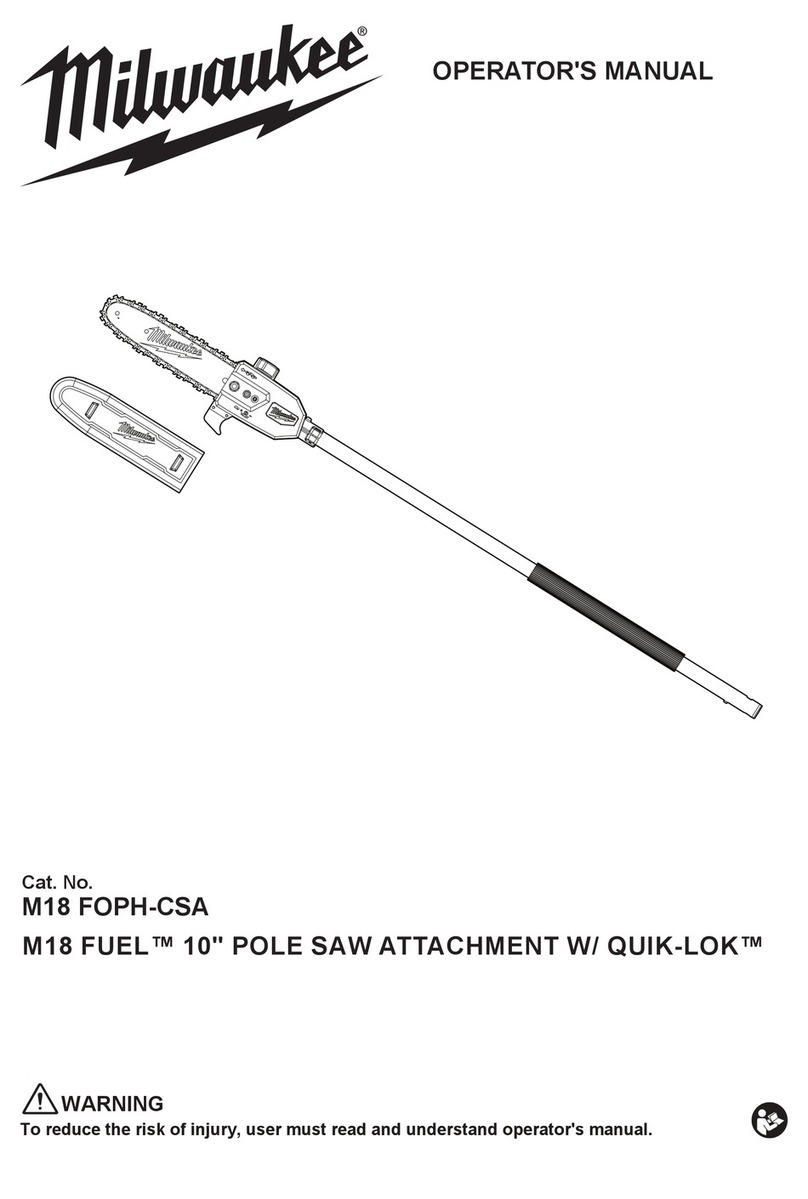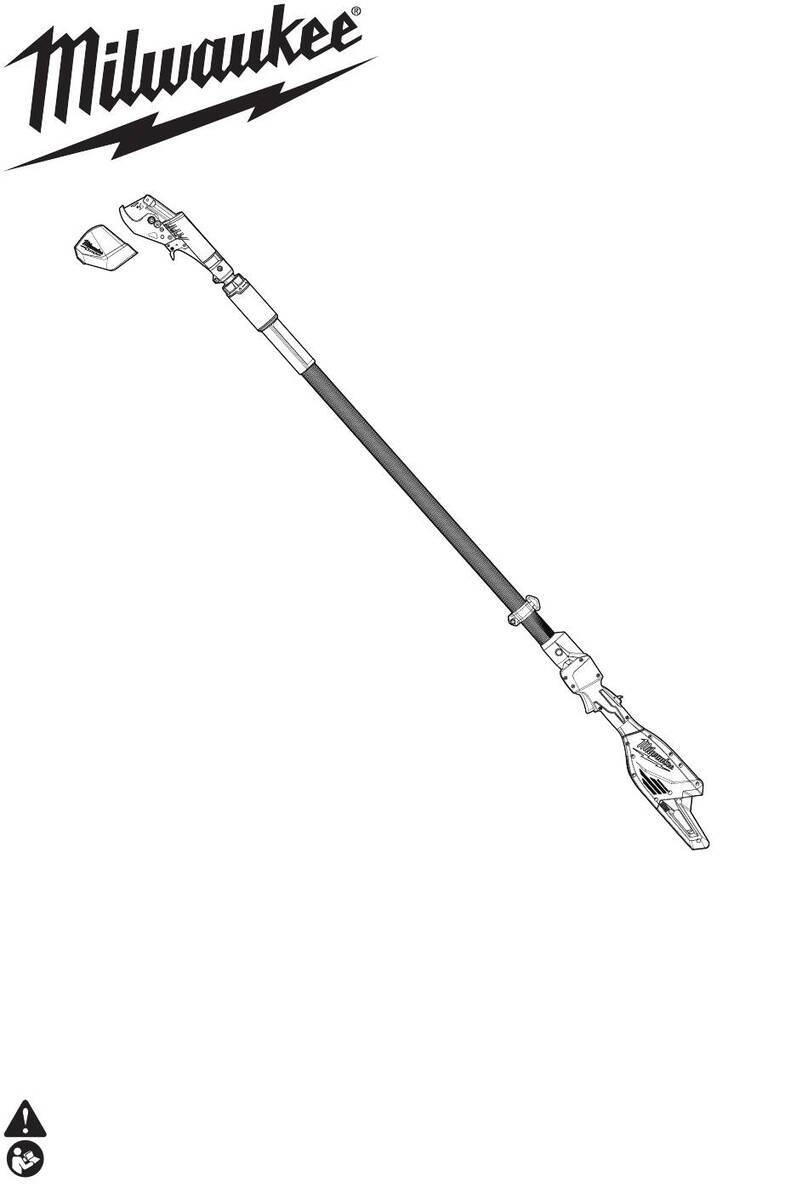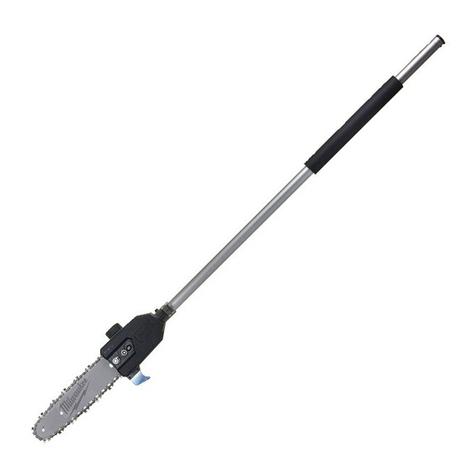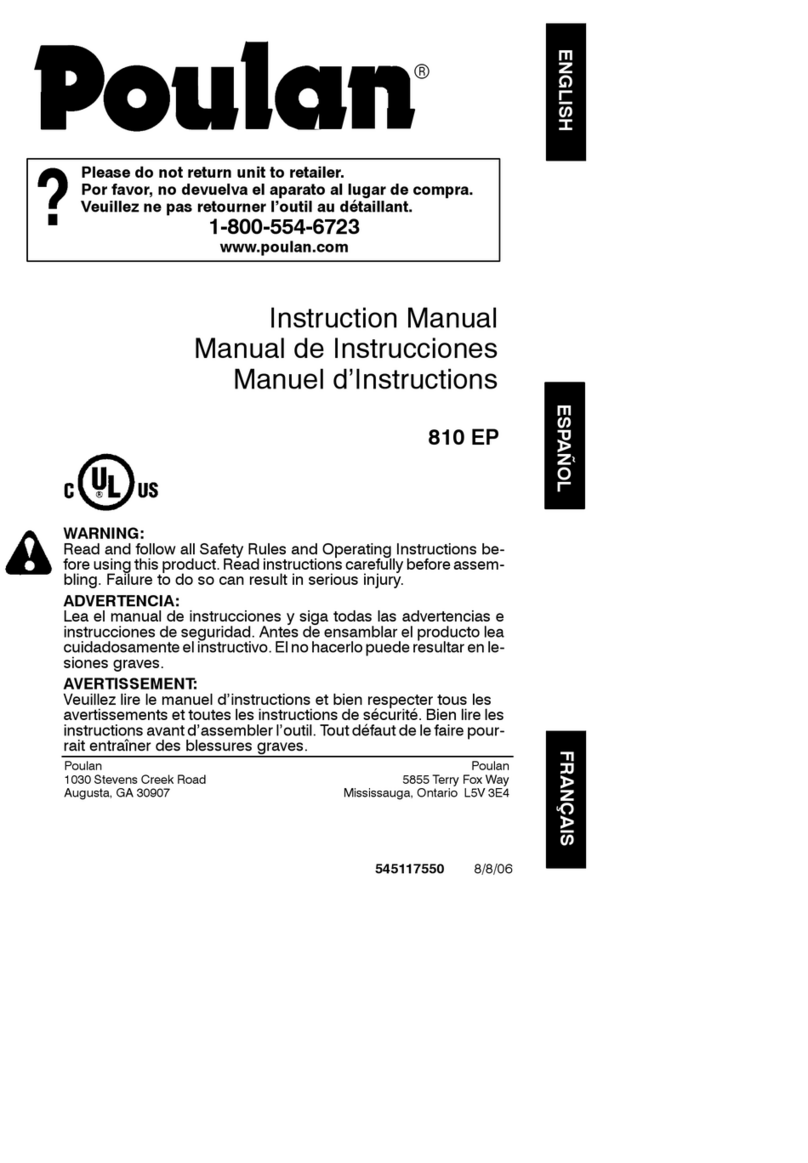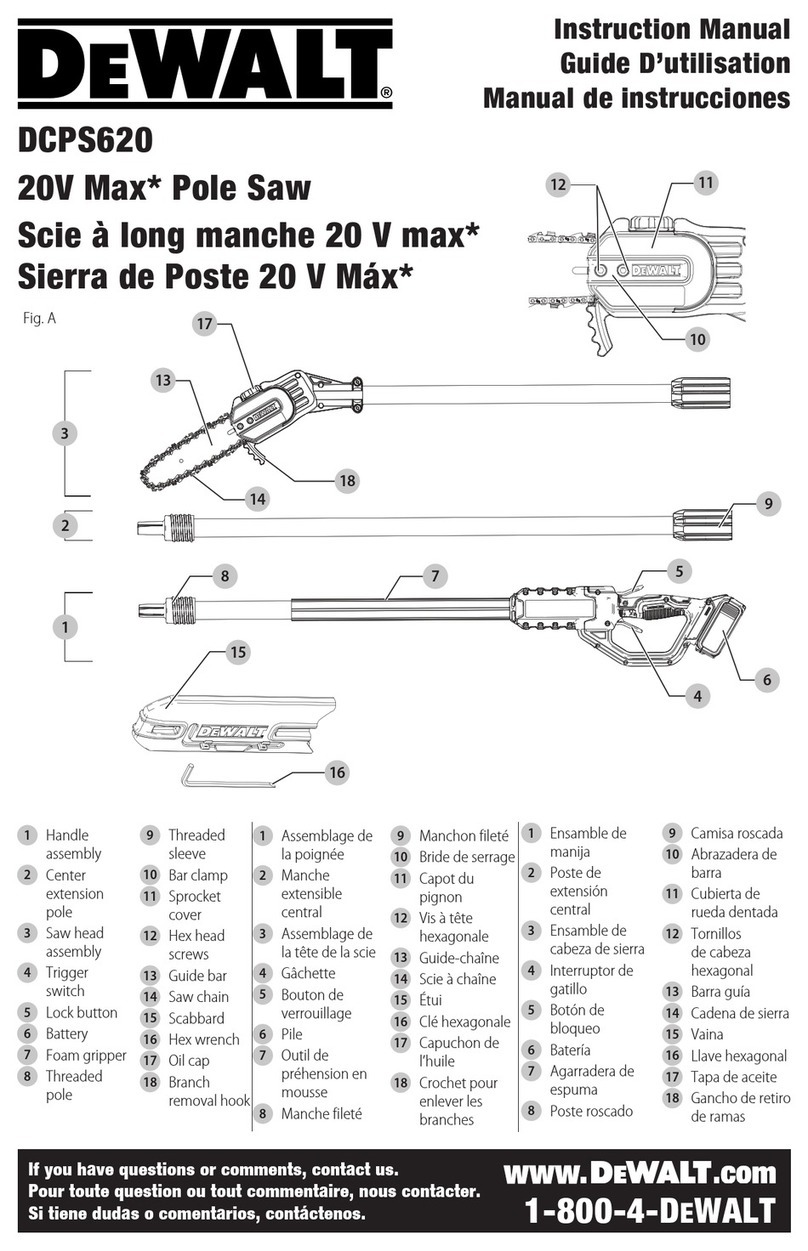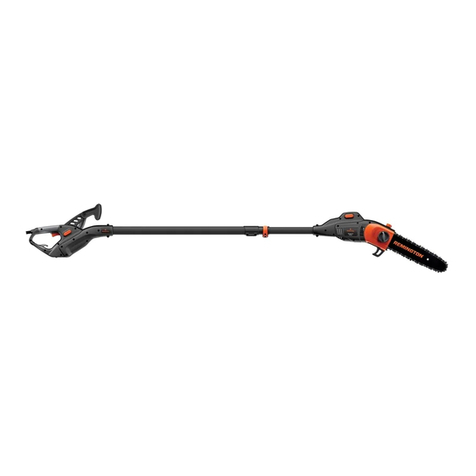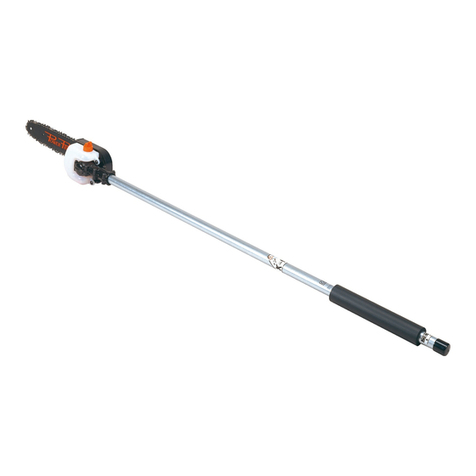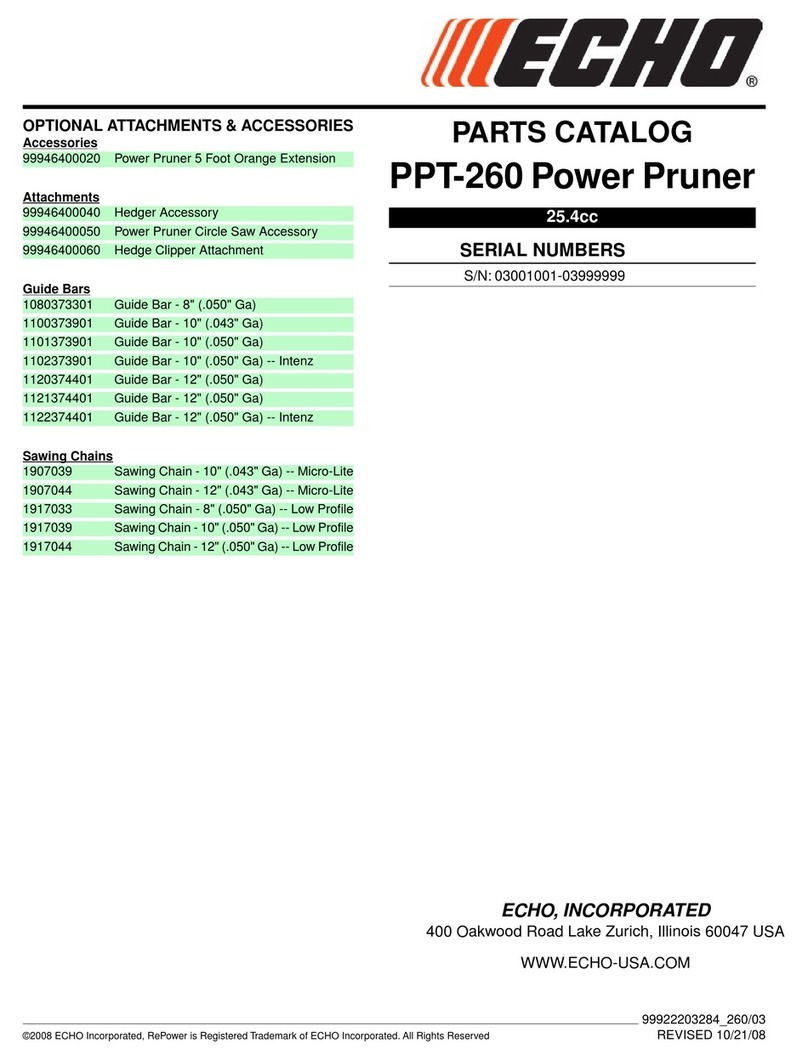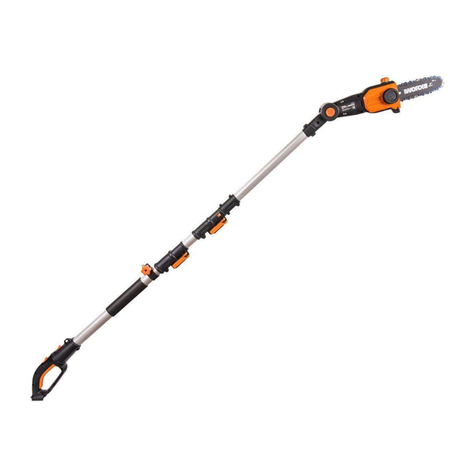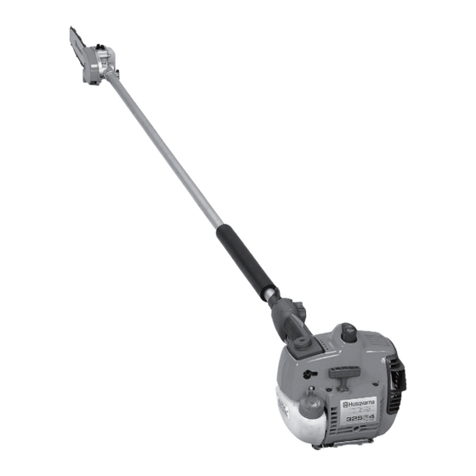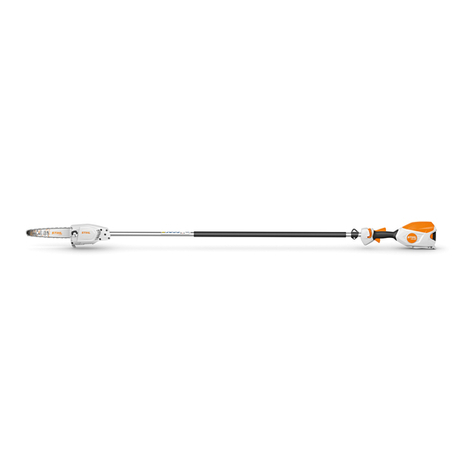
5
•Only use replacement guide bars and saw chains
specied by the manufacturer. Incorrect replace-
ment guide bars and saw chains may cause chain
breakage and/or kickback.
•Follow the manufacturer’s sharpening and
maintenance instructions for the saw chain.
Decreasing the depth gauge height can lead to in-
creased kickback.
•Use extreme caution to reduce the risk of falling.
Keep the saw chain well clear of any harness and
lifeline to prevent them from being severed.
•Follow all instructions when clearing jammed
material, storing or servicing the pruning saw.
Make sure the switch is o and the battery pack
is removed. Unexpected actuation of the pruning
saw while clearing jammed material or servicing
may result in serious personal injury.
Other Pruning Saw Safety Rules
•Do notstartcuttinguntilyouhaveaclearwork area,
secure footing, and a planned retreat path from the
falling workpiece. Cluttered areas invite accidents.
•Make sure that the area in which you are cutting
is free from obstructions. Do not let the nose of
the guide bar contact a log, branch, fence, or any
other obstruction that could be hit while you are
operating the saw.
•Always cut with the unit running at full speed.
Fully squeeze the throttle trigger and maintain
a steady cutting speed.
•Use extreme caution to reduce the risk of fall-
ing. Keep the saw chain well clear of any harness
and lifeline to prevent them from being severed.
•Keep ALL children, bystanders, visitors, and
animals out of the work area while starting or
cutting with the pruning saw.
•Dress Properly - Wear snug tting clothing. Al-
ways wear heavy, long pants, long sleeves, overalls,
jeans or chaps made of cut resistant material or
ones that contain cut resistant inserts. Wear non-slip
safety footwear. Wear non-slip heavy duty gloves to
improve your grip and to protect your hands. Do not
wear jewelry, short pants, sandals, or go barefoot.
Do not wear loose tting clothing, which could be
drawn into the motor or catch the chain or under-
brush. Secure hair so it is above shoulder level.
•Heavy protective clothing may increase operator
fatigue, which could lead to heat stroke. During
weather that is hot and humid, heavy work should
be scheduled for early morning or late afternoon
hours when temperatures are cooler.
•Always wear proper eye protection with side
shields, marked to comply with ANSI Z87.1 when
operating the pruning saw.
•Always be aware of what you are doing when
using the pruning saw. Use common sense. Do
not operate the pruning saw when you are tired, ill, or
under the inuence of alcohol, drugs, or medication.
•Keep all parts of your body away from the saw
chain when the unit is running.
•Never let anyone use your pruning saw who has
not received adequate instructions in its proper
use. This applies to rentals as well as privately
owned saws.
•Before you start the unit, make sure the saw
chain is not contacting any object.
•Stop the pruning saw before setting it down.
•Maintain the unit with care. Keep the cutting edge
sharp and clean for best performance and to reduce
the risk of injury. Follow instructions for lubricating
and changing accessories.
•Maintain a rm grip on the recommended grasp-
ing surfaces. If an operation cannot be performed
safely with two hands on the saw, USE EXTREME
CAUTION.
•During operations where it is necessary to
use one hand, such as to steady or control the
workpiece/branch, guide workpiece away from
you, or provide better visibility to the work area:
• Keep free hand clear of the chain and out of the
cutting path.
• Maintain a rm grip on the branch being cut to
avoid "skating" or "bouncing" of the saw.
• Never cut above shoulder height.
• Do not cross arms or overreach.
• Always cut away from yourself.
• Avoid excess exing or tension on the branch
being cut.
•Do not operate a pruning saw that is damaged, im-
properly adjusted, or not completely and secure-
ly assembled. Chain should slow to a stop when the
switch trigger is released. If the chain continues to
turn after the switch trigger has been released, have
the unit serviced by an authorized service center.
•Do not force the pruning saw. The job can be
performed better and safer at the rate for which it
was intended.
•Always use the right product for your applica-
tion. The pruning saw should be used for cutting
wood only. Never use the pruning saw to cut plastic,
masonry or non-wood building materials.
•Use extreme caution when cutting thin branches,
vines or small underbrush. The slender material
may catch the saw chain and be whipped toward you
or pull you o balance. We recommend using hedge
trimmers or brush cutters for these operations.
•Store pruning saw when not in use. Pruning saw
should be stored in a dry and high or locked area
out of the reach of children. When storing pruning
saw place the cover on the bar and chain.
•Battery operated units do not have to be plugged
into an electrical outlet; therefore, they are al-
ways in operating condition. Be aware of possible
hazards even when unit is not operating.
•Save these instructions. Refer to them frequently
and use them to instruct others who may use this
product. If you loan someone this product, loan them
these instructions also.
•After each use, clean the machine with a soft
dry cloth. Remove any chips, dirt and debris in
the battery bay.
•Follow the manufacturer’s sharpening and
maintenance instructions for the saw chain.
Decreasing the depth gauge height can lead to in-
creased kickback.
•Keep handles dry, clean, and free from oil and
grease. Greasy, oily handles are slippery causing
loss of control.


